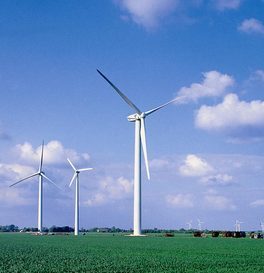
Researchers from the U.S. Energy Department’s Ames Laboratory have concluded a months-long study that shows that wind turbines may benefit surrounding crops.
The purpose of the study was to see if wind farms in rural farmlands have any impact on the crops growing nearby and, amazingly, it turns out that the turbines could benefit crops in a few ways. The turbines direct airflow downward towards the crops, creating an increase in air turbulence, which can help the crops stay cooler on hot days and warmer on cold nights. In the spring and fall, this would keep a more constant temperature around the crops, helping to prevent a frost and extend the growing season.
The extra turbulence also could help dry dew that settles on plants and keeping the plants dry would reduce the potential for fungi or toxins to grow on leaves. That saves farmers from having to artificially dry crops.
The third benefit from the added air turbulence could be an amping up of the CO2 extraction process by the plants. The airflow could also pump extra CO2 from the soil, facilitating photosynthesis.
The researchers think these benefits will mostly be subtle, but in years or location where temperatures are more extreme, the benefits could be significant.
And I can make up other uses as well. I know that crops like fruit trees and wine grapes need protection against frost, wouldn’t it be nice to use the windturbines, instead of flying in helicopters? And the growers can earn an extra dime on alternative energy.

Comments by our Users
Be the first to write a comment for this item.